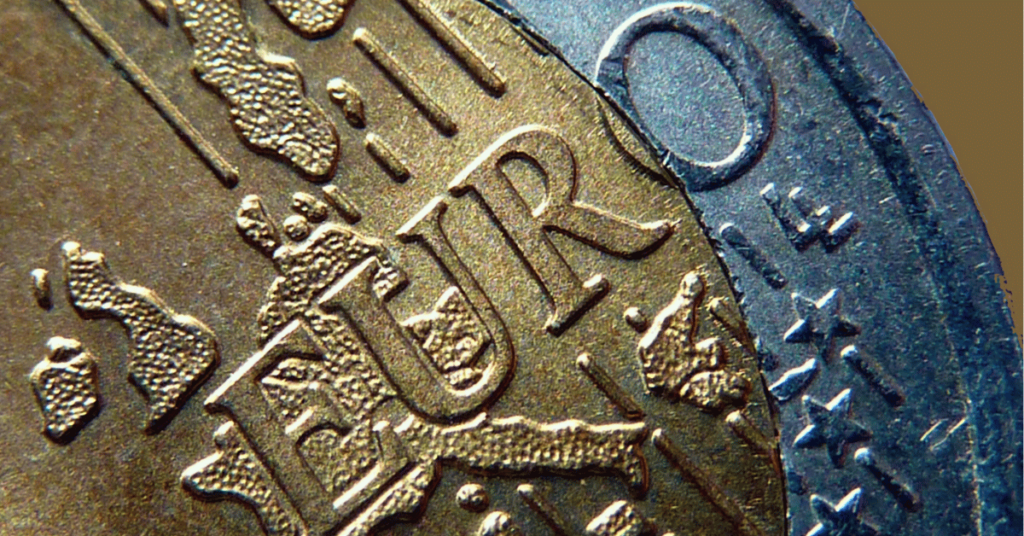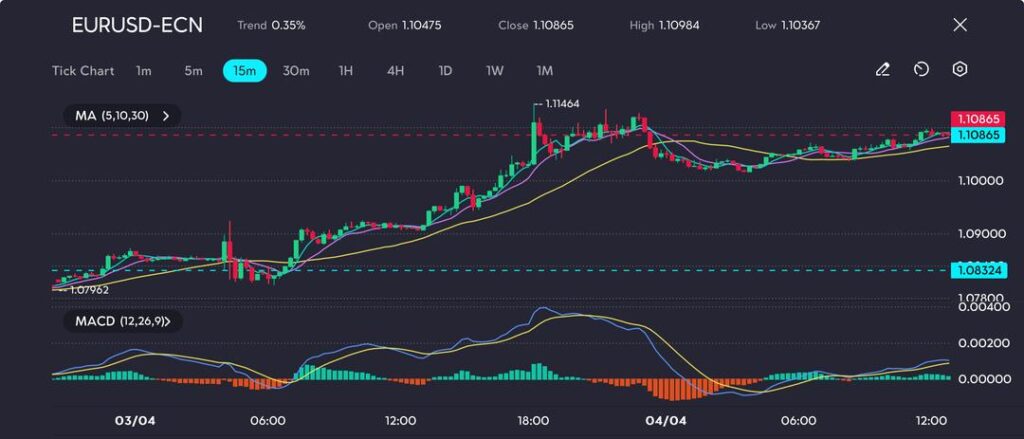
The euro is on the rise as traders turn away from the US dollar, unsettled by growing trade tensions and confusion around US economic policy. With uncertainty in the air, many investors are seeking safer options—and right now, the euro is proving to be one of them.
The euro saw a notable rally on Thursday, closing at 1.10865 and recording a 2.4% gain for the week—its most significant weekly rise in over a year.
This surge follows a sharp repricing across global currency markets, as the US dollar comes under pressure due to intensifying trade disputes and a deterioration in trader sentiment.
The catalyst behind this shift was President Donald Trump’s decision to impose tariffs ranging from 24% to 54% on key trade partners, fuelling concerns of an uncoordinated trade war lacking clear objectives.
As investors seek safer alternatives, the euro has emerged as a favoured option, briefly touching 1.10984—its highest level since January.
On the 15-minute chart, EUR/USD displays strong bullish momentum, having advanced steadily from the 1.078 region to a peak of 1.11464 before consolidating around the 1.10865 mark.

The pair remains in an upward trend, with prices well above the 5, 10, and 30-period moving averages—all of which are rising and offering dynamic support.
The MACD indicator reinforces the bullish outlook, showing a solid crossover early in the session, followed by positive divergence and a widening histogram.
Although momentum has cooled slightly, the MACD lines are beginning to flatten—suggesting a potential continuation of the uptrend if buying pressure resumes.
There has been a sharp reversal in sentiment towards the dollar, with markets unwinding long positions.
The greenback has fallen 2.7% against the yen and 3% versus the Swiss franc, as investors respond to increasing uncertainty around US economic policy and structural challenges.
Fed funds futures now reflect expectations of nearly 100 basis points in rate cuts by December, indicating market belief that rising unemployment will compel the Federal Reserve to act—even as inflationary pressures rise due to increased import costs.
This presents a significant dilemma: the Fed may be forced to choose between containing inflation or preventing a recession, all while the dollar’s reputation as a safe-haven currency continues to erode.
The EUR/USD outlook remains tilted to the upside, particularly if instability in US policymaking persists.
However, heightened volatility is expected around upcoming comments from Fed Chair Jerome Powell, which could signal the central bank’s strategic direction.
If Powell adopts a dovish stance—prioritising growth risks over inflation—the euro may extend its rally. Conversely, a hawkish tone could trigger a retracement toward the 1.1030–1.1000 range.
Traders are also closely monitoring developments in tech stocks, particularly Apple and firms tied to global supply chains, as well as shifts in broader equity flows.
For now, the euro is benefitting from the dollar’s weakness—but its momentum will likely hinge on policy signals from Washington in the days ahead.
Click here to open account and start trading.